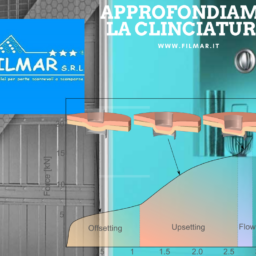As mentioned in the previous article, we begin a series of articles that will exhibit some technically important characteristics of our subframes. These items are definitely aimed at installers, but it will be written in such a way to be accessible to a wider audience.
Coming in fact, to a wider audience, more people will be able to “touch” the quality of our products, demanding from their installers the best at the best price.
Elasticity and plasticity are fundamental characteristics for a metal structure which has to be inserted into a plastered wall or in a plasterboard wall.
The wall in fact, in the course of time, will undergo different stresses on the part of the wall itself and can withstand them only if it is very flexible and elastic.
Contrary to popular belief, the solid structures are most elastic because, if subjected to stress, they return to the initial state when the stress is finished.
Our counterframes must be, moreover, also very plastic in order to adapt in the best way to the walls in which they are grafted.
Plasticity and elasticity, however, are exactly the opposite characteristics, the first, in fact, tells us how a material is deformable, the second, however, indicates how the material does not undergo deformations returning to the initial state after a solicitation.
How to make, therefore, a subframe at the same time plastic and elastic?
As if this were not enough, a good subframe must also be solid in order to support the wall in which it is inserted.
The solidity is a feature that goes agree with the elasticity of a material, in fact does not mean rigid solid, but the exact opposite. Think of a stone, very rigid, when subjected to an impact, easily breaks, the steel on the other hand, being an elastic materialsubjected to shocks, it splits more difficult.
On the contrary solidity contrasts with the plasticity of a material, in fact a very plastic material, see the “raw” clay, is easily flaky under stress.
How to combine all these needs for sustained counterframes?
Filmar has thought different technical solutions that have made unique structures of its subframes.
First, the subframe is constructed in pressformade galvanized steel, in such a way as to be very plastic, while retaining a certain degree of solidity and elasticity (typically of steel).
The subframe so formed, however, is not sufficiently solid and elastic and is likely to be deformed over time from the typical movements of the walls.
To increase the strength and therefore the elasticity of its own subframes, Filmar adds the lateral reinforcements.
At this point, another problem arises: weld side reinforcements creates, in fact, welding points, easily attacked by atmospheric agents, as set forth in the preceding articles.
Filmar has also brilliantly solved this problem, using the innovative technique of clinching, which consists in a pressure junction of the plates that connect the subframe to reinforcement.
This pressed-junction is irreversible, therefore, makes “indivisible” the two surfaces, without using unnecessary welds.
Thus the structure of the subframe will not have welds, but at the same time will be: solid, elastic and endowed with the proper plasticity.
The Clinching process of subframes for sliding doors
is one of the flagships of our company and makes unique our products.
Filmar: beyond the targets, to deliver a superior quality at the best price.

